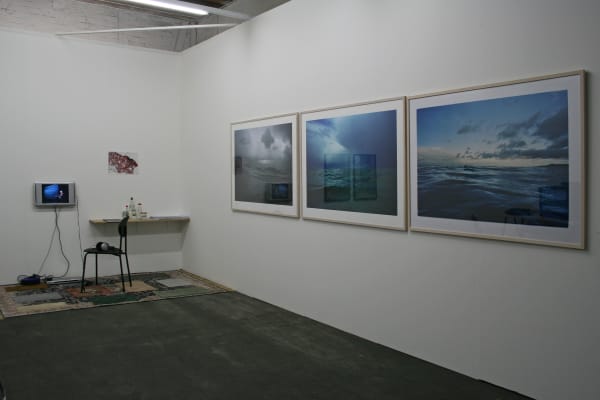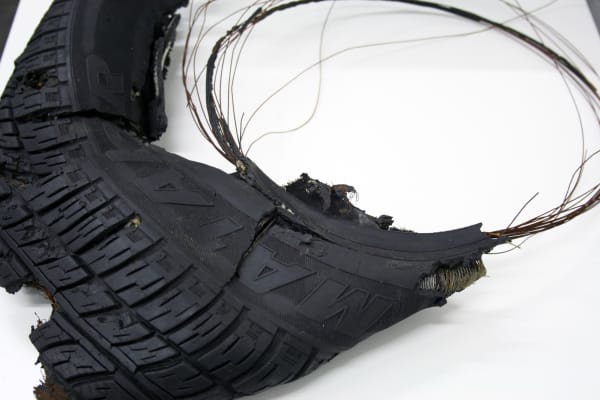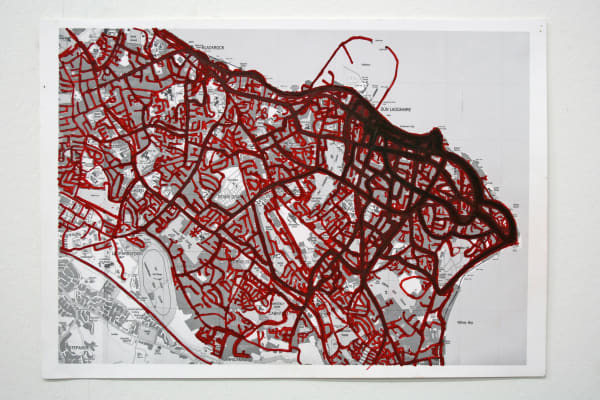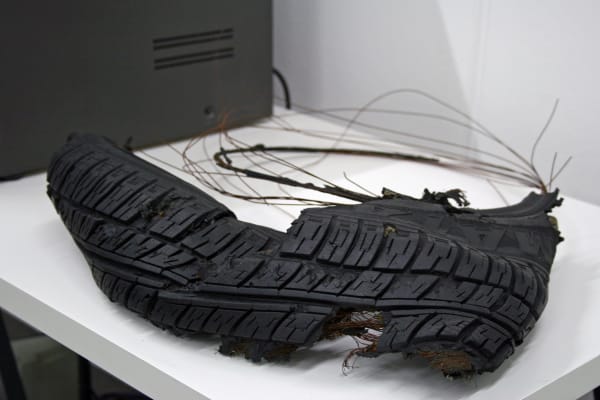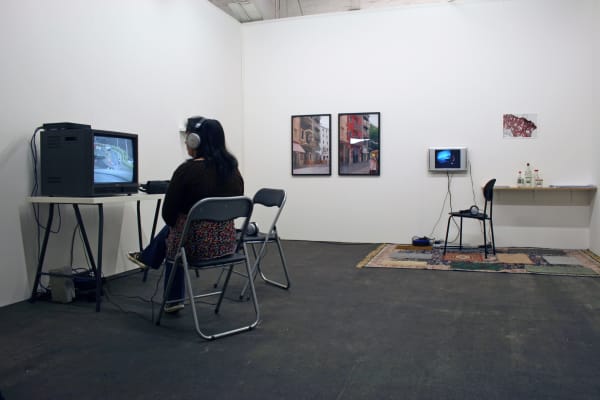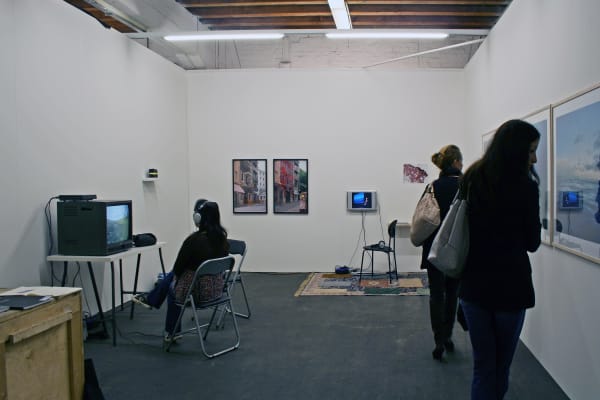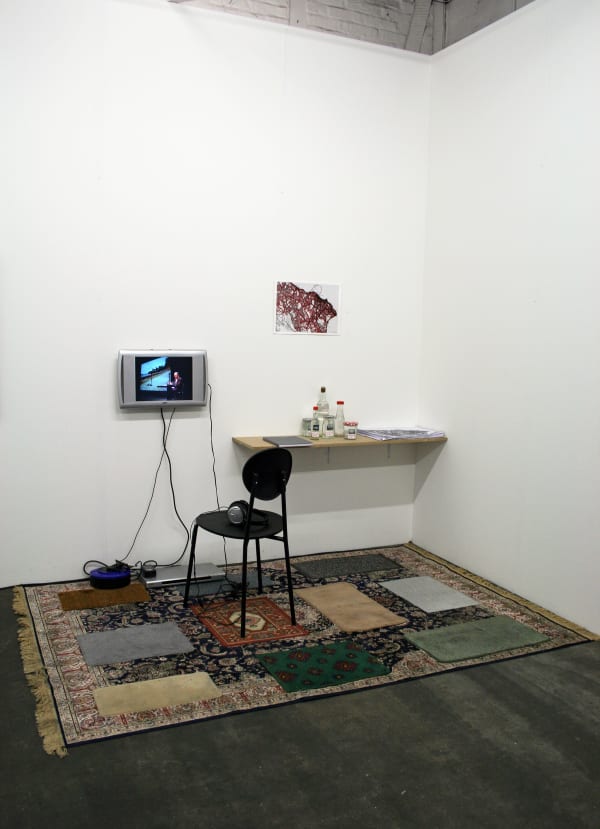Gary Coyle has been visiting the well known 40 Ft swimming spot for the last decade. The 40 Foot is a promontory on the southern tip of Dublin Bay at Sandycove, where people have swum in the Irish Sea all year round for some 250 years. In former times it was kept solely as a gentlemen’s bathing place and the gentlemen’s swimming club was established to help conserve the area. Due to its isolation and gender-specific nature it became a popular spot for nudists, but in the 1970s during the women’s liberation movement, a group of female equal-rights activists plunged into the waters, now it is open to women and children as well. The gentlemen’s swimming club still exists and is open to both genders. The Forty Foot also featured in the novels Ulysses by James Joyce, At Swim-Two-Birds by Flann O’Brien and At Swim, Two Boys by Jamie O’Neill.
He has bottled the water ,recorded each experience in a diary, taken photographs of the coastline and has worked on large-scale drawings of the sea. To submerge yourself in this work is to submerge yourself in the experience of the daily swimmer. View the brooding skies; the crashing waves and occasionally the expanse of calm water as most of the photographs were taken while Coyle was in the water. The result of this investigation is AT SEA THE DAILY PRACTISE OF SWIMMING.
Sean Lynch’s artworks investigate and reflect upon the methods, understandings and representations involved in dealing with the contents of history. In recent years the idea of spotlighting idiosyncratic moments of the past has been his primary concern. This occurs through actions and gestures made around particular subjects that are identified from specific research and fieldwork. The photographs, installations and publications artworks generated in this process are speculative and open-ended in nature, engaging the contingencies of interpreting legacies of historical and cultural knowledge. Recent projects have included finding chalk from a Joseph Beuys blackboard that was erased after a lecture he gave in 1974; trying to document HyBrazil, a mythical island in the Atlantic; locating remnants of the DeLorean car factory at the bottom of Galway Bay; investigating alleged supernatural trees, in danger of destruction from Ireland’s new motorways; and working with peregrine falcons to develop alternative representations of a housing project.
The resulting artworks resist the notion of history as simulation. Instead they suggest the presence of an actual, although hidden, past, mostly eradicated from popular consciousness but briefly available in moments evoked through artistic practice. Extended narrative sequences are central to this approach, often moving between the anecdotal and objective-informative. In working in this manner, he views history not as a structure that anchors and legitimates everything, but rather as an amalgam of tropes and shifting viewpoints. The venture is to pick up fragments and renegotiate them into alternative configurations. Gallery presentations become an open space for this feedback to occur, and allow a place for the continued dissemination of tainted evidence and marginalia to be rehearsed and played out.



